-
Out of stock
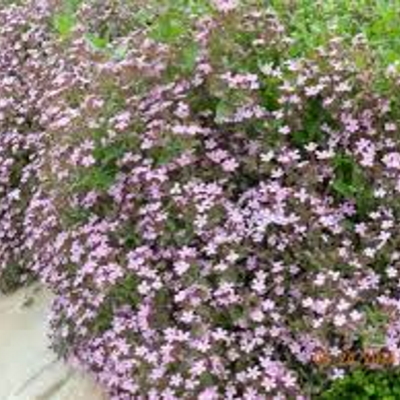
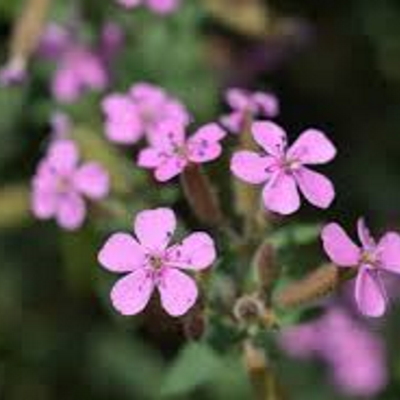 Soapwort is a favourite perennial for cool-alpine and rock gardens. This semi-evergreen blooms from May to August with five-petaled pink flowers joined at the base to form a nectar tube that is highly attractive to bees. Provide good drainage. The roots really can be used to make soap. Rock Soapwort looks marvelous in containers, but best in situations when it can trail and seed itself. Sturdy and easy to grow. Stems are thicker, stronger, taller, and easier to manage than those of annual gypsophila, an otherwise similar flower. 3/4 to 1" dusty pink blooms float above gray-blue, waxy foliage. Branching plant habit. Also known as cow soapwort.
Soapwort is a favourite perennial for cool-alpine and rock gardens. This semi-evergreen blooms from May to August with five-petaled pink flowers joined at the base to form a nectar tube that is highly attractive to bees. Provide good drainage. The roots really can be used to make soap. Rock Soapwort looks marvelous in containers, but best in situations when it can trail and seed itself. Sturdy and easy to grow. Stems are thicker, stronger, taller, and easier to manage than those of annual gypsophila, an otherwise similar flower. 3/4 to 1" dusty pink blooms float above gray-blue, waxy foliage. Branching plant habit. Also known as cow soapwort. -
-
 This cheerful variety will be the star of your cutting garden! An unexpected beauty, it has seemingly endless combinations of red, rose, scarlet, lavender, gold, yellow, salmon, orange, and pink. A perfect choice for beautiful bouquets all summer. Dahlia Flowered Mix zinnias are super showy border plants that grow 90-110 cm tall
This cheerful variety will be the star of your cutting garden! An unexpected beauty, it has seemingly endless combinations of red, rose, scarlet, lavender, gold, yellow, salmon, orange, and pink. A perfect choice for beautiful bouquets all summer. Dahlia Flowered Mix zinnias are super showy border plants that grow 90-110 cm tall -
Out of stock
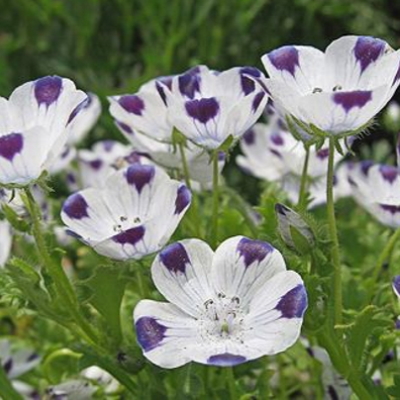
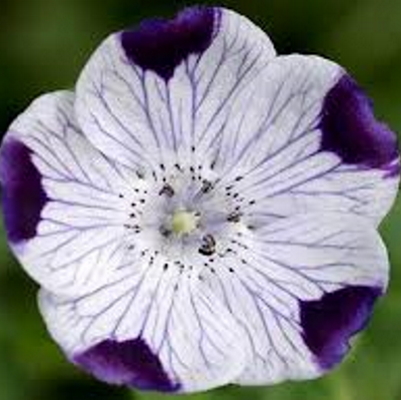 Five spot wildflowers are named for their distinct flowers: 2.5 cm light blue on white blossoms of five petals, each of which is tipped with a vivid, deep purple spot. They are reasonably compact plants that grow to 30 cm high and 20 cm wide and do not spread over the course of the summer. They prefer cool climates, germinating best in soil temperatures of 13-18 C. Perfect for cool springs. They should be able to survive if given lots of shade. They are annuals, and they’ll die back with the first frost. If allowed to die back naturally they reseeds and you will have new plants next year. They bloom consistently and impressively all spring long.
Five spot wildflowers are named for their distinct flowers: 2.5 cm light blue on white blossoms of five petals, each of which is tipped with a vivid, deep purple spot. They are reasonably compact plants that grow to 30 cm high and 20 cm wide and do not spread over the course of the summer. They prefer cool climates, germinating best in soil temperatures of 13-18 C. Perfect for cool springs. They should be able to survive if given lots of shade. They are annuals, and they’ll die back with the first frost. If allowed to die back naturally they reseeds and you will have new plants next year. They bloom consistently and impressively all spring long. -
-
Out of stock

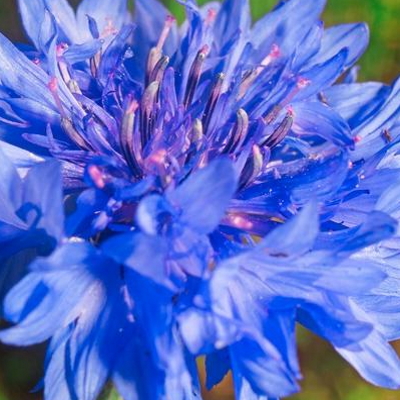 Bachelor's Button or Cornflower-It's hard to beat the colours of the bachelor's button. It got the name "cornflower" because it grew as a weed in cornfields, but you may welcome it in your garden. It does spread, but it is easy to pull out any extras. This tall 90 cm mix comes in the colours of purple, blue, pink and white provide papery blossoms that bring summer colour to the garden. They're attractive planted in a group in a corner or open spot in the garden. Deadhead regularly to prolong blooming. Plant periodically over spring to prolong bloom times.
Bachelor's Button or Cornflower-It's hard to beat the colours of the bachelor's button. It got the name "cornflower" because it grew as a weed in cornfields, but you may welcome it in your garden. It does spread, but it is easy to pull out any extras. This tall 90 cm mix comes in the colours of purple, blue, pink and white provide papery blossoms that bring summer colour to the garden. They're attractive planted in a group in a corner or open spot in the garden. Deadhead regularly to prolong blooming. Plant periodically over spring to prolong bloom times. -
Out of stock
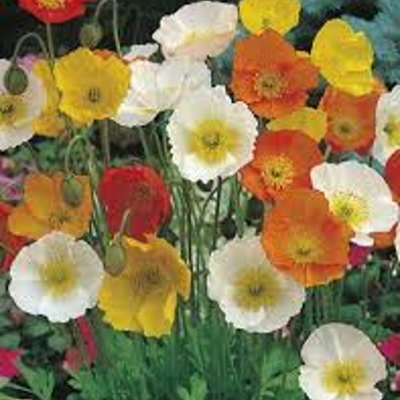 Papaver nudicaule. The Iceland Poppy is a hardy short-lived perennial. It self sows easily so will last for years to come. The cup-shaped blooms have a texture like crepe paper and appear in a range of subdued pastel colours; apricot, gold, tangerine, and white. Sow Iceland Poppy seeds in early spring or late fall where they are to grow permanently. The flower stalks grow to around 30cm tall and are among the longest-lasting poppies as cut flowers. Use a candlestick to seal the cut stem to prolong them as cut flowers. They are highly attractive to bees. Plant in late fall or early spring. Poppy seeds need to be cold stratified to germinate. Poppies only need soil that is ordinary and moist, but well-drained. The seeds should not be planted deeply; they just need to be compressed into the soil, as they need light to germinate. The best method for planting is to mix one part seed with 5 parts sand and scatter over the prepared growing area.
Papaver nudicaule. The Iceland Poppy is a hardy short-lived perennial. It self sows easily so will last for years to come. The cup-shaped blooms have a texture like crepe paper and appear in a range of subdued pastel colours; apricot, gold, tangerine, and white. Sow Iceland Poppy seeds in early spring or late fall where they are to grow permanently. The flower stalks grow to around 30cm tall and are among the longest-lasting poppies as cut flowers. Use a candlestick to seal the cut stem to prolong them as cut flowers. They are highly attractive to bees. Plant in late fall or early spring. Poppy seeds need to be cold stratified to germinate. Poppies only need soil that is ordinary and moist, but well-drained. The seeds should not be planted deeply; they just need to be compressed into the soil, as they need light to germinate. The best method for planting is to mix one part seed with 5 parts sand and scatter over the prepared growing area. -
Out of stock
 Enjoy a baby's breath that is actually pink! Plant in your sunny perennial garden and watch as large panicles of true light pink flowers splash your garden from early through midsummer. This upright, well-branched, bush type grows up to 3' tall. Use as a filler plant to cover dying bulb foliage or for perennials that go dormant in the summer months. The pretty pink flowers also are perfect in floral arrangements! Makes an excellent dried flower.
Enjoy a baby's breath that is actually pink! Plant in your sunny perennial garden and watch as large panicles of true light pink flowers splash your garden from early through midsummer. This upright, well-branched, bush type grows up to 3' tall. Use as a filler plant to cover dying bulb foliage or for perennials that go dormant in the summer months. The pretty pink flowers also are perfect in floral arrangements! Makes an excellent dried flower. -
Out of stock
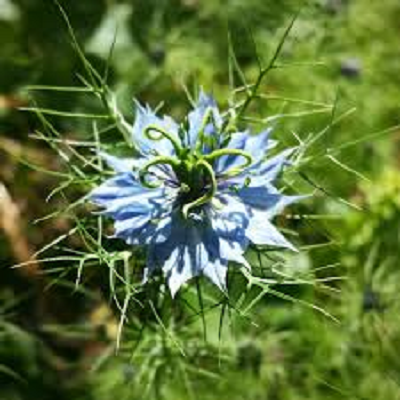
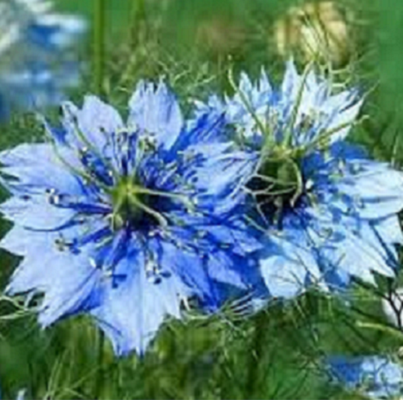 Nigella damascena. Persian Jewels Nigella seeds are also known as Love-in-a-Mist. Its delicate appearance belies its hardy, dependable nature. Pale as a baby flower, Persian Jewel matures to intense shades of violet, blue, white, and pastels in between. Each flower emerges from a tangle of lacy foliage. After blooming, curious-looking fruits ripen, dry, and eventually release seeds for the next season. These distinctive seed heads can be dried for flower arrangements. Everlasting flowers are grown especially for its spiky decorative seed pods. Germinates 10–14 days at 60°. Grow on at 60–65°. Set transplants 6–9" apart. For continuous bloom, direct seed weekly until June. Nigella grows 20–50cm (8–20") tall.
Nigella damascena. Persian Jewels Nigella seeds are also known as Love-in-a-Mist. Its delicate appearance belies its hardy, dependable nature. Pale as a baby flower, Persian Jewel matures to intense shades of violet, blue, white, and pastels in between. Each flower emerges from a tangle of lacy foliage. After blooming, curious-looking fruits ripen, dry, and eventually release seeds for the next season. These distinctive seed heads can be dried for flower arrangements. Everlasting flowers are grown especially for its spiky decorative seed pods. Germinates 10–14 days at 60°. Grow on at 60–65°. Set transplants 6–9" apart. For continuous bloom, direct seed weekly until June. Nigella grows 20–50cm (8–20") tall. -
Out of stock
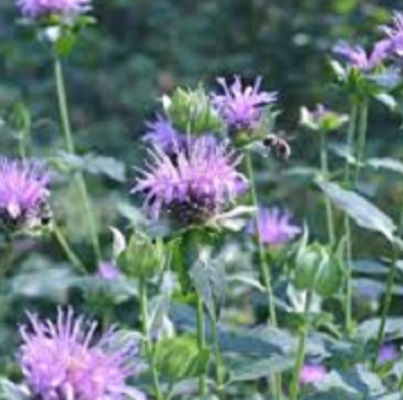 A bee magnet, softly aromatic leaves, and colourful flower heads are just a few lovely characteristics of Bee Balm (Monarda). Guaranteed to create a great impact when planted in masses with its starry explosions of colour burst from mid-summer through until the last frost. Known as bergamot. Leaves can be used in the kitchen before flowers appear.
A bee magnet, softly aromatic leaves, and colourful flower heads are just a few lovely characteristics of Bee Balm (Monarda). Guaranteed to create a great impact when planted in masses with its starry explosions of colour burst from mid-summer through until the last frost. Known as bergamot. Leaves can be used in the kitchen before flowers appear. -
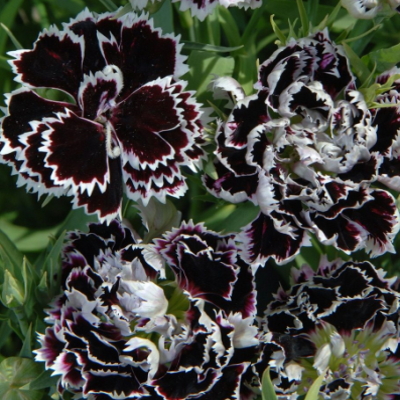 Hardy annual. Dainty, fully double blooms in deepest maroon, almost black, edged in brilliant white. The margins of the petals are heavily frilled, and the overall effect is one of great dignity and refinement, yet stunning beauty. The 2-3 cm blooms are sweetly fragrant. Makes a fine cut flower but really shines in a massed planting. Compact plants, the flowers are held above the grass-like foliage, reaching about a foot in height.
Hardy annual. Dainty, fully double blooms in deepest maroon, almost black, edged in brilliant white. The margins of the petals are heavily frilled, and the overall effect is one of great dignity and refinement, yet stunning beauty. The 2-3 cm blooms are sweetly fragrant. Makes a fine cut flower but really shines in a massed planting. Compact plants, the flowers are held above the grass-like foliage, reaching about a foot in height. -
Out of stock
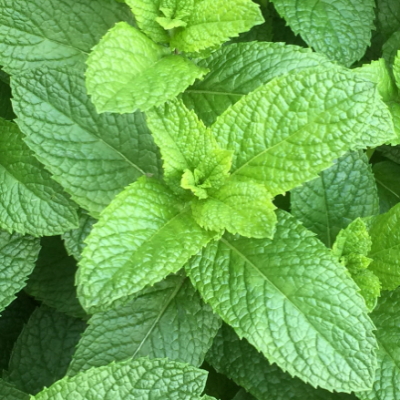 Spearmint came to North America with the Colonists. They used mint teas medicinally for headaches, indigestion and to help them sleep. Mint is also an excellent culinary addition and makes a great tea for the pure pleasure of it. As a general rule, mint family plants root vigorously when allowed to grow freely and can be invasive. Many gardeners grow them in containers to keep them in check.
Spearmint came to North America with the Colonists. They used mint teas medicinally for headaches, indigestion and to help them sleep. Mint is also an excellent culinary addition and makes a great tea for the pure pleasure of it. As a general rule, mint family plants root vigorously when allowed to grow freely and can be invasive. Many gardeners grow them in containers to keep them in check.

